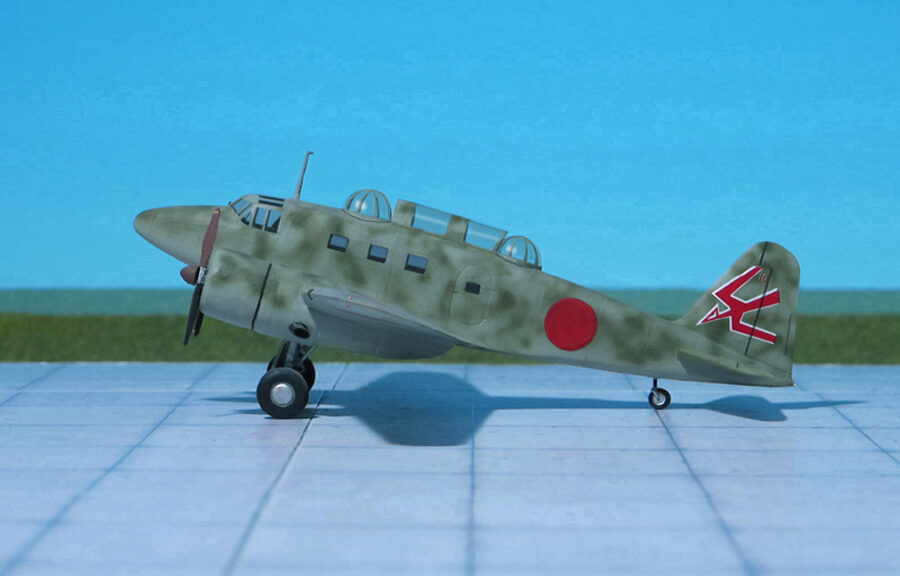TYPE: Crew Trainer
ACCOMMODATION: Crew of five to nine
POWER PLANT: Two Hitachi Ha-13a Army Type 98 radial engines, rated at 510 hp each
PERFORMANCE: 234 mph at 6,560 ft
COMMENT: In late 1939, at a request of Koku Hombu, Tachikawa began designing a twin-engined multi-purpose trainer. The aircraft was required to duplicate closely the handling characteristics and performance of the series of modern twin-engined bombers the Army had operated since 1937. It was to be used for the simultaneous training of a complete bomber’s crew including pilot, bombardier, navigator, gunner and radio-operator. To achieve the necessary performance Tachikawa selected a low-wing design with retractable undercarriage and adopted a pair of Hitachi Ha-13a radials with Hamilton-type two blade variable-pitch propellers to power the aircraft.
Designated Tachikawa Ki-54, the first prototype was completed and flown during summer of 1940. Following minor modifications which partially corrected a nose-heavy tendency during landings, the aircraft was placed in production in 1941 as Army Type 1 Advanced Trainer Model A (Ki -54a). Like the prototype, the aircraft of this first production series were primarily designed for pilot training. However, the Ki-54a was soon supplanted by the Ki-54b (Army Type 1 Operations Trainer Model B) which had full provision for bomber crew training and had four gunnery stations each mounting a flexible 7.7 mm Type 89 machine-gun. Operated by all military multi-engined training schools and communications schools as well by civil training schools under Japanese Army contracts, the Ki-54b was built was in greater numbers than any other variants of the Ki-54.
As a crew trainer and light transport, the Ki-54was one of the most successful Japanese aircraft of the war and was well known to the Allies which named it “Hickory” regardless of the version. The code name “Joyce” was erroneously assigned to a non-existent light bomber version (Ref.: 1).












